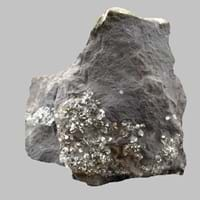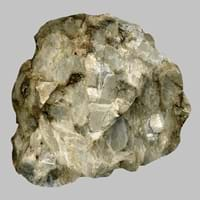Definition
Argillites are highly compact sedimentary or slightly metamorphosed rocks that consist largely or wholly of particles of clay or silt but lack the fissility of shale or the cleavage characteristic of slate
Sovite is a coarse-grained variety of carbonatite which belongs to intrusive igneous rock
Discoverer
Unknown
Unknown
Etymology
From Latin Argilla (clay) and -ite in English which became agrilla+ -ite = Argillite
Not Available
Class
Sedimentary Rocks
Igneous Rocks
Sub-Class
Durable Rock, Soft Rock
Durable Rock, Soft Rock
Group
Not Applicable
Plutonic
Other Categories
Fine Grained Rock, Opaque Rock
Coarse Grained Rock, Fine Grained Rock, Medium Grained Rock, Opaque Rock
Texture
Clastic, Polished
Granular, Poikiloblastic
Color
Dark Grey to Black, Pink, Red, White
Black, Brown, Colourless, Green, Grey, Pink, White
Durability
Durable
Durable
Scratch Resistant
Yes
Yes
Appearance
Rough and Dull
Dull, Banded and Foilated
Interior Uses
Decorative Aggregates, Homes, Interior Decoration
Decorative Aggregates, Homes
Exterior Uses
As Building Stone, Garden Decoration, Office Buildings
As Building Stone, Garden Decoration, Office Buildings
Other Architectural Uses
Curbing, Whetstones
Curbing
Construction Industry
Used for flooring, stair treads, borders and window sills.
As a Flux in the Production of Steel and Pig Iron, As a Sintering Agent in Steel Industry to process Iron Ore, As Dimension Stone, Cement Manufacture, for Road Aggregate, Making natural cement, Manufacture of Magnesium and Dolomite Refractories, Unknown, Unknown
Medical Industry
Not Yet Used
Taken as a Supplement for Calcium or Magnesium
Antiquity Uses
Artifacts, Monuments, Sculpture
Artifacts
Commercial Uses
Fire resistant, Used to manufracture paperweights and bookends
An Oil and Gas Reservoir, As a Feed Additive for Livestock, Creating Artwork, Gemstone, Metallurgical Flux, Production of Lime, Soil Conditioner, Source of Magnesia (MgO)
Types
Not Available
Not Available
Features
Is one of the oldest rock
Available in lots of colors, Generally rough to touch, Is one of the oldest rock
Archaeological Significance
Monuments
Used
Not Yet Used
Famous Monuments
Data Not Available
Not Applicable
Sculpture
Used
Not Yet Used
Famous Sculptures
Data Not Available
Not Applicable
Figurines
Used
Not Yet Used
Formation
An argillite is a fine-grained sedimentary rock mainly composed of clay particles which forms from lithified muds which contain variable amounts of silt-sized particles.
Sovites are formed due to low degrees of partial melting of rocks.
Mineral Content
Biotite, Chlorite, Feldspar, Micas, Muscovite or Illite, Plagioclase, Pyrite, Quartz
Ancylite, Apatite, Barite, Fluorite, Magnetite, Natrolite, Sodalite
Compound Content
Iron(III) Oxide, Potassium Oxide, MgO, Silicon Dioxide
CaO, Carbon Dioxide, Sodium Oxide
Types of Metamorphism
Not Applicable
Burial Metamorphism, Cataclastic Metamorphism, Contact Metamorphism, Hydrothermal Metamorphism, Impact Metamorphism, Regional Metamorphism
Types of Weathering
Biological Weathering
Biological Weathering, Chemical Weathering, Mechanical Weathering
Types of Erosion
Chemical Erosion
Chemical Erosion, Coastal Erosion, Glacier Erosion, Sea Erosion, Water Erosion, Wind Erosion
Grain Size
Fine Grained
Medium to Fine Coarse Grained
Fracture
Conchoidal to Uneven
Conchoidal
Streak
White to Grey
White
Porosity
Highly Porous
Less Porous
Luster
Waxy and Dull
Subvitreous to Dull
Cleavage
Slaty
Not Available
Specific Gravity
2.56-2.68
2.86-2.87
Transparency
Opaque
Opaque
Density
2.54-2.66 g/cm3
2.84-2.86 g/cm3
Specific Heat Capacity
Not Available
Resistance
Heat Resistant, Impact Resistant
Heat Resistant, Pressure Resistant
Deposits in Eastern Continents
Asia
Bangladesh, China, India, Russia
China, India, Kazakhstan, Mongolia, Russia, Uzbekistan
Africa
Ethiopia, Kenya, Morocco, South Africa, Tanzania
Namibia, Nigeria, South Africa
Europe
Austria, France, Germany, Greece, Italy, Romania, Scotland, Spain, Switzerland
Austria, Denmark, Germany, Great Britain, Netherlands, Norway, Poland, Sweden, Switzerland, United Kingdom
Others
Not Yet Found
Greenland
Deposits in Western Continents
North America
USA
Canada, USA
South America
Bolivia, Chile, Colombia, Ecuador, Peru, Venezuela
Brazil
Deposits in Oceania Continent
Australia
New South Wales, New Zealand, Queensland, Victoria, Western Australia
New South Wales, New Zealand
All about Argillite and Sovite Properties
Know all about Argillite and Sovite properties here. All properties of rocks are important as they define the type of rock and its application. Argillite belongs to Sedimentary Rocks while Sovite belongs to Igneous Rocks.Texture of Argillite is Clastic, Polished whereas that of Sovite is Granular, Poikiloblastic. Argillite appears Rough and Dull and Sovite appears Dull, Banded and Foilated. The luster of Argillite is waxy and dull while that of Sovite is subvitreous to dull. Argillite is available in dark grey to black, pink, red, white colors whereas Sovite is available in black, brown, colourless, green, grey, pink, white colors. The commercial uses of Argillite are fire resistant, used to manufracture paperweights and bookends and that of Sovite are an oil and gas reservoir, as a feed additive for livestock, creating artwork, gemstone, metallurgical flux, production of lime, soil conditioner, source of magnesia (mgo).










